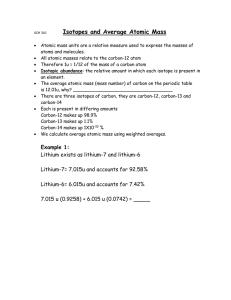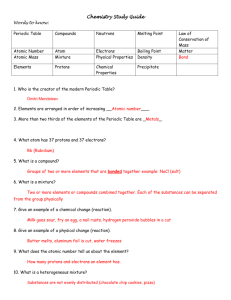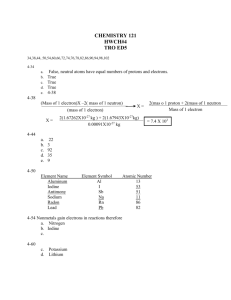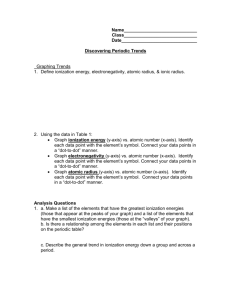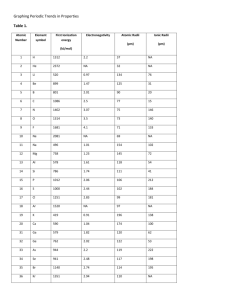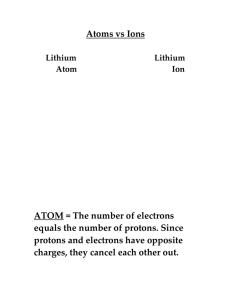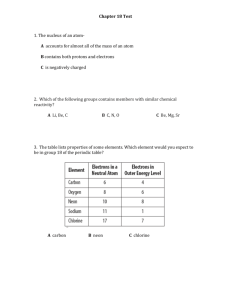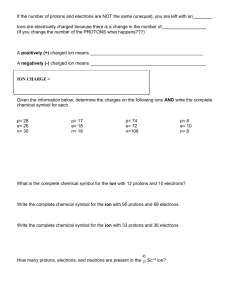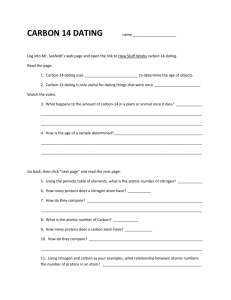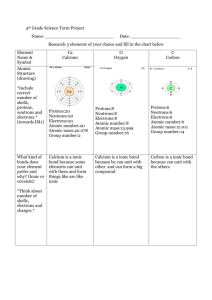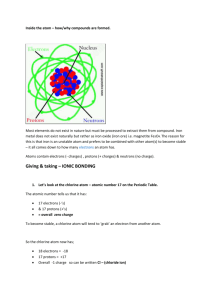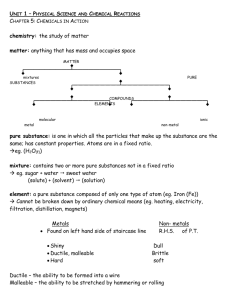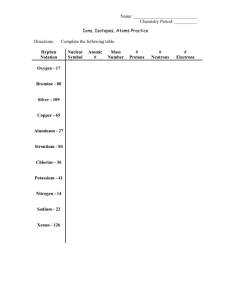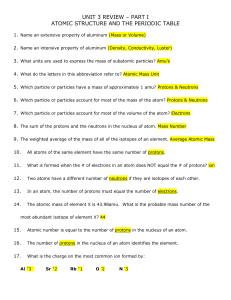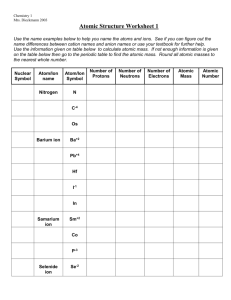013368718X_CH28_437
advertisement
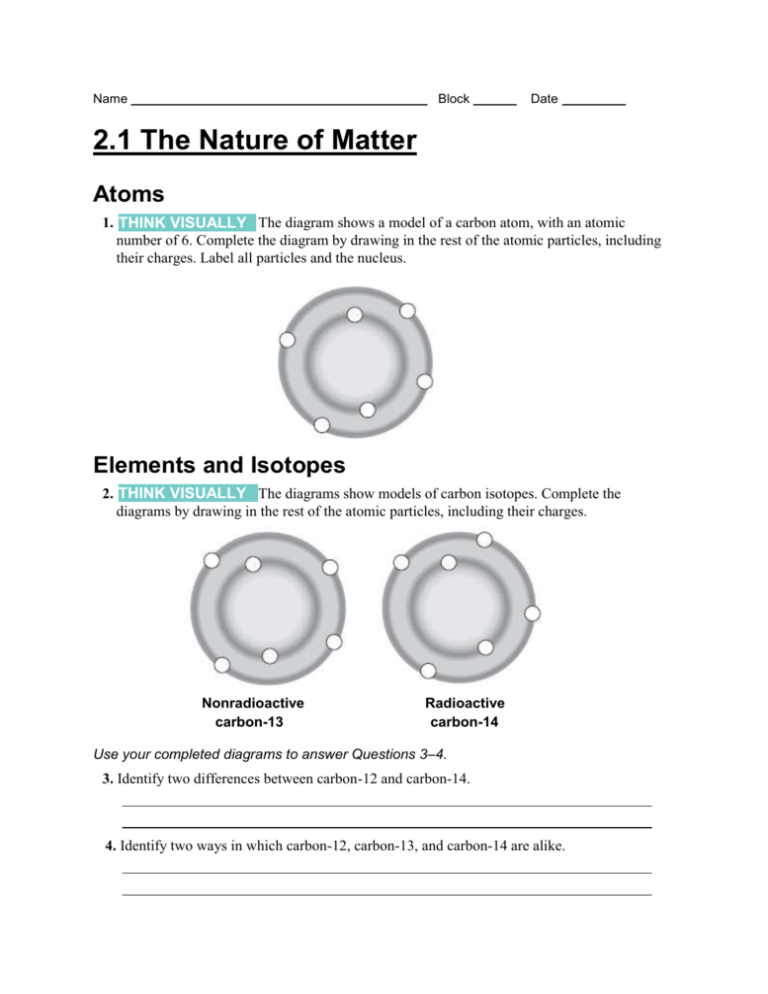
Name Block Date 2.1 The Nature of Matter Atoms 1. THINK VISUALLY The diagram shows a model of a carbon atom, with an atomic number of 6. Complete the diagram by drawing in the rest of the atomic particles, including their charges. Label all particles and the nucleus. Elements and Isotopes 2. THINK VISUALLY The diagrams show models of carbon isotopes. Complete the diagrams by drawing in the rest of the atomic particles, including their charges. Nonradioactive carbon-13 Radioactive carbon-14 Use your completed diagrams to answer Questions 3–4. 3. Identify two differences between carbon-12 and carbon-14. 4. Identify two ways in which carbon-12, carbon-13, and carbon-14 are alike. For Questions 5–7, complete each statement by writing the correct word or words. 5. A chemical element is a pure substance that consists entirely of one type of . 6. Atoms of the same element that differ in the number of neutrons they contain are called ____. 7. An atom is made up of protons, neutrons, and . Chemical Compounds 8. What is a chemical compound? 9. What do the formulas for table salt, NaCl, and water, H2O, indicate about these compounds? Chemical Bonds 10. Sea salt contains calcium chloride (CaCl2), an ionic compound similar to table salt. One atom of calcium (atomic number 20) bonds to two atoms of chlorine (atomic number 17). Fill in the number of protons and electrons in each ion. Chloride ion Calcium ion Chloride ion Protons Protons Protons Electrons Electrons Electrons 11. What is the difference between an ionic bond and a covalent bond? Apply the Big idea 12. How are chemical bonds important in metabolism?



